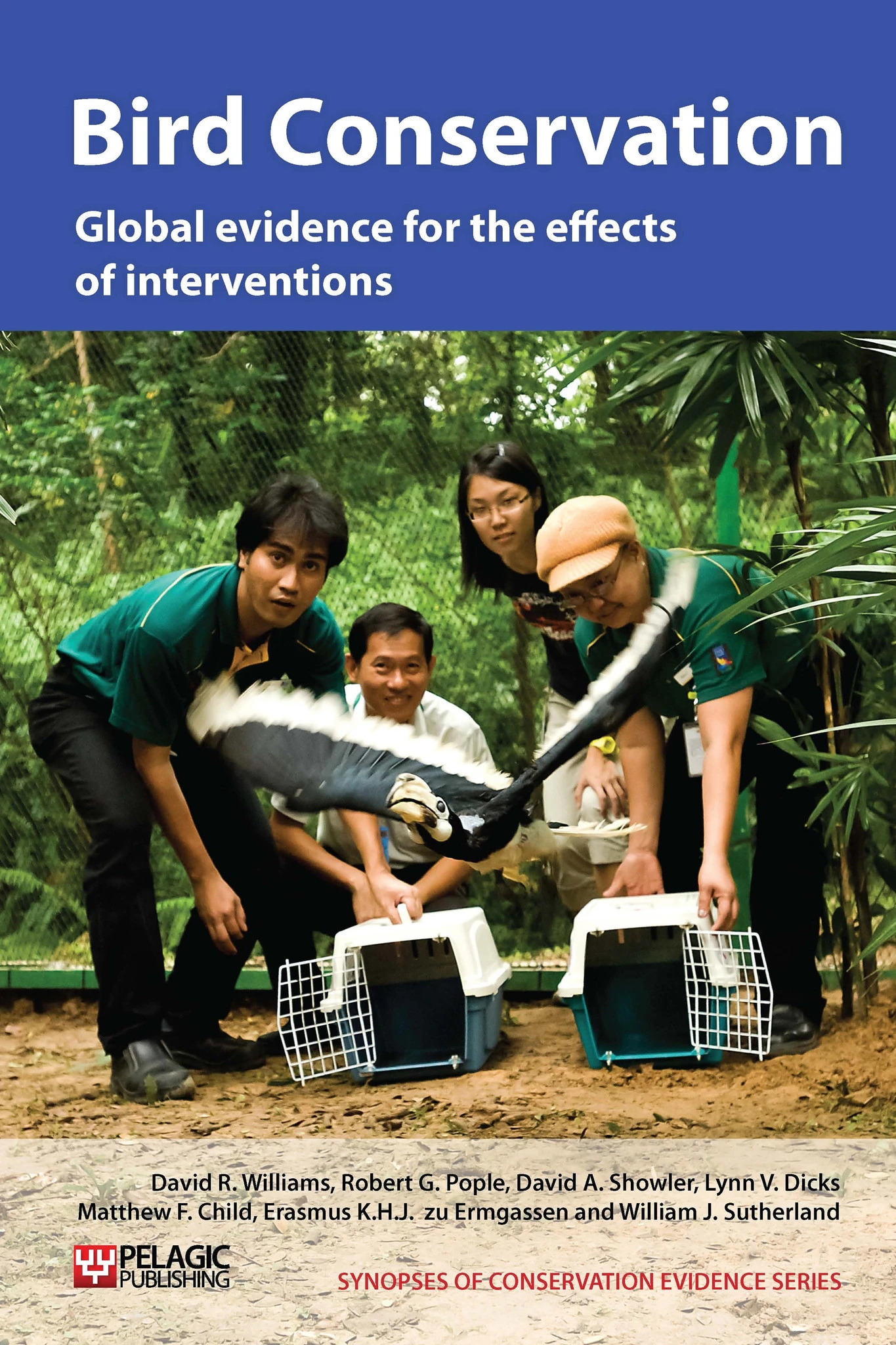Use captive breeding to increase or maintain populations of raptors
-
Overall effectiveness category Likely to be beneficial
-
Number of studies: 5
View assessment score
Hide assessment score
How is the evidence assessed?
-
Effectiveness
50% -
Certainty
41% -
Harms
10%
Study locations
Supporting evidence from individual studies
A small study reports that a pair of black sparrowhawks, Accipiter melanoleucus, successfully bred in an aviary in Paris, France, in 1979 (Brosset 1981). The birds were caught in the wild (in Gabon) at four years (female) or three months (male) old in 1971 and 1976 respectively. The pair built a nest in 1977, attempted to breed in 1978 but laid only infertile eggs. In 1979 they laid three eggs, all of which hatched, although only a single chick fledged.
Study and other actions testedA small study from Canberra, Australia (Olsen & Olsen 1981), found that a pair of wild-caught brown goshawks, Accipiter fasciatus, failed to breed in captivity in 1975 (two years after being caught). However, following transfer to a smaller outdoor cage (from an indoor room with no windows) and the falconry training of the male, the pair did breed successfully each year from 1976-9, including a second brood in 1978. A total of 17 eggs were laid and 15 chicks survived and were released, discussed in ‘Release captive bred individuals’.
Study and other actions testedA small study at a wildlife research centre in Maryland, USA (Wiemeyer 1981), found that, between 1976 and 1980, between one and five pairs of captive bald eagles, Haliaeetus leucocephalus, incubated 31 eggs. Of these, 15 were fertile (48%) and 14 hatched (45% of all, 93% of fertile eggs). The one failure was possibly due to a wild bird disturbing the pair and causing them to cease incubation. The main cause of infertility appeared to be lack of matings between pairs, with each pair producing infertile clutches the first year they were paired. Clutches averaged 2.5 eggs for first clutches and 1.9 for second. This study is also discussed in ‘Use artificial insemination in captive breeding’, ‘Artificially incubate and hand-rear birds in captivity’, ‘Foster birds with wild conspecifics’ and ‘Release captive-bred individuals’.
Study and other actions testedA 1993 review (Cade & Jones 1993) details the captive-breeding programme for the Mauritius kestrel, Falco punctatus, on Mauritius. Between 1981 and 1986, 28 fertile eggs and two young were removed from the wild, resulting in 13 healthy captive birds, which began breeding in 1984. By 1986-7, more than 30 birds had been reared and by 1993 a total of 618 eggs had been laid, of which 253 were fertile, 164 hatched and 139 produced independent young. The rate of egg fertility in captivity (41%) was lower than that of wild eggs (74% of 265 eggs). Before the release of captive-bred individuals, the wild population had grown from five individuals in 1973 to 31 in 1986. This study is also discussed in ‘Artificially incubate and hand-rear birds in captivity’, ‘Foster chicks or eggs with wild conspecifics’ and ‘Release captive-bred individuals’.
Study and other actions testedA 1995 update (Jones et al. 1995) of the same conservation programme studied in Cade & Jones 1993, found that hand-rearing Mauritius kestrel, Falco punctatus, eggs from birds in captivity was less successful than rearing wild-laid eggs. This study is discussed in more detail in ‘Artificially incubate and hand-rear birds in captivity’.
Study and other actions tested
Where has this evidence come from?
List of journals searched by synopsis
All the journals searched for all synopses
This Action forms part of the Action Synopsis:
Bird Conservation
Bird Conservation - Published 2013
Bird Synopsis





)_2023.JPG)














